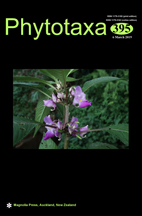Abstract
Very thin filamentous cyanobacteria are ubiquitous in a wide range of environments. For many years they were traditionally studied according to their morphological properties only. With the introduction of additional taxonomic methods (cytomorphological analyses, molecular sequencing, exact ecological studies, better data about phytogeographical distribution), traditional genera such as Leptolyngbya and Phormidium were found to be polyphyletic. Phormidesmis belonged to a newly formed genus that was supposed to explain the variability of such very thin simple filamentous cyanobacteria. However, even after definition of Phormidesmis based on distinct cytomorphological and phylogenetic traits, the variability within this genus remained unresolved. Here we analyzed 26 Phormidesmis strains to describe the variability within this genus, classified two new species (P. arctica and P. communis) and transferred Leptolyngbya nigrescens into P. nigrescens. A tabular review of Phormidesmis species is included. The diacritical features of all these species are: width up to 1–4 µm, barrel-shaped cells, which can be shorter or slightly longer than wide, with apparent constrictions at the cross-walls. Our study shows that Phormidesmis is a morphologically and genetically well-defined genus with a global distribution. A newly described genus Leptodesmis has significant morphological similarities both with Phormidesmis and Leptolyngbya, however with intermediate phylogenetic position with significant divergence in 16S rRNA gene. Leptodesmis is cryptic both to Phormidesmis and Leptolyngbya. In the initial part of the life cycle resembles Leptolyngbya, the appearance of older trichomes change to Phormidesmis like morphology.

